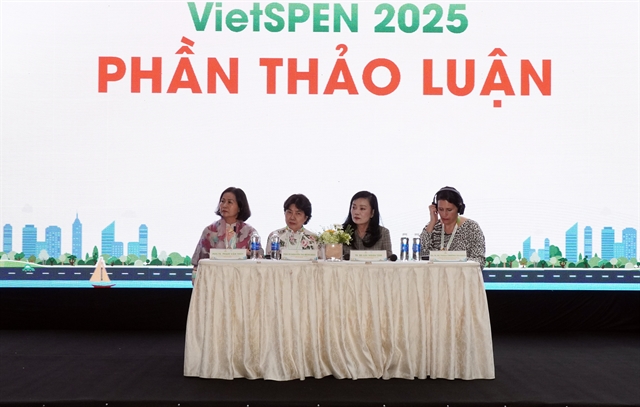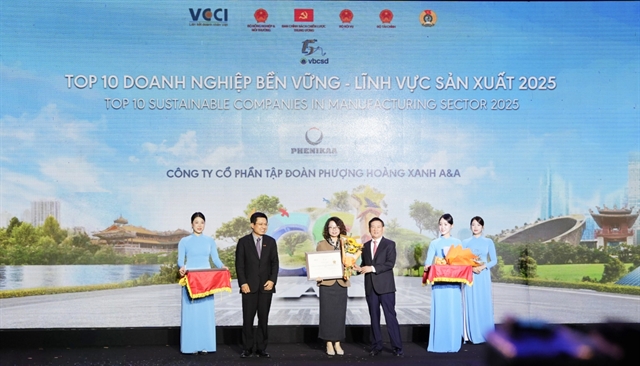 Politics & Law
Politics & Law

 |
| Minister of Finance Nguyễn Văn Thắng presents a report on the amended draft Law on National Reserves. — VNA/VNS Photo Doãn Tấn |
HÀ NỘI — The National Assembly (NA) on Monday morning heard reports on the draft amended Law on National Reserves and the draft resolution on breakthrough development in education and training as part of the continuing 10th session.
According to Minister of Finance Nguyễn Văn Thắng, the purpose of the amended draft Law on National Reserves is to institutionalise the Party and State's guidelines and orientations.
It will improve the legal framework on national reserves; promote decentralisation and delegation in building mechanisms, policies and laws; simplify administrative procedures; apply science, technology, innovation and digital transformation; and effectively mobilise all lawful resources for national reserves.
The draft law contains six chapters and 35 articles, reduced from 66 articles in the current law.
Amended and perfected contents focus on objectives; definitions; state management of national reserves; principles for managing and using reserve goods; responsibilities of state management agencies; responsibilities of organisations and enterprises contracting for storage; state budget expenditures for national reserves; national reserve strategies and national reserve inventories.
Phan Văn Mãi, Head of the NA’s Economic and Financial Committee and representative of the verification agency, expressed agreement with the necessity of the amended law.
He advised the Government to continue reviewing the scope of amendments, prioritising urgent and essential contents and ensuring the quality of the draft law.
Strategic reserves form an important part of the draft. Regulations have basically concretised strategic reserve objectives. To ensure viability, consistency and meet new requirements, the verification agency suggested the Government direct related bodies to refine principles of strategic reserve management; state policies; strategic reserve goods list; reserve levels; technology application; market regulation mechanisms; and strategic reserves for important resources and minerals.
Education personnel recruitment
The resolution stipulates some special and outstanding mechanisms and policies to implement breakthroughs in education and training development.
Based on the Politburo’s Resolution 71-NQ/TW and practical implementation, the Ministry of Education and Training proposed that the resolution focus on six key policy groups with direct and highly feasible impact.
It covers management and development of the education workforce; curriculum and educational development mechanisms; digital transformation, science, technology and innovation; international integration; finance, incentives and investment.
The policies aim to institutionalise Party and State guidelines, including developing teams of teachers, administrators and the education workforce; reforming mechanisms, curricula and education systems; and promoting science, technology and digital transformation in education.
It also focuses on international cooperation and integration; financial resources and incentives; and education system organisation and governance.
The draft resolution provides special incentives for teachers and staff, authorises provincial education directors in recruitment and personnel management to ensure consistent workforce management; and establishes mechanisms for attracting and utilising high-quality human resources in teaching, research and management.
It guarantees comprehensive autonomy for higher education and vocational training institutions; reforms the curriculum at all education levels; mandates the uniform use of a single textbook nationwide; and promotes open, interlinked education systems and lifelong learning.
It promotes digital transformation in management, teaching, learning and quality assurance; develops intelligent education platforms and national education databases; and encourages cooperation between the State, schools and businesses in technology transfer and human resource development tied to science, technology and innovation.
Notably, the draft stipulates transitional provisions on education system organisation, the unified use of textbooks, and ending the activity of school councils in public institutions, except schools with international agreements.
It promotes a model where the unit's party secretary is also the head of the educational institution to unify leadership and enhance governance effectiveness.
The NA’s Culture and Social Committee agreed with the necessity, objectives and principles of the draft resolution and concurred with the Government's proposal to submit the resolution for NA approval via an expedited procedure.
Regarding education workforce development in Article 2, subsection (a) of Clause 1 specifies the authority of the provincial Director of Education in personnel transfers and assignments within two or more administrative communes, which may imply two communes within the same province or across provinces. Directors cannot exercise authority over personnel in other provinces.
The verification agency recommended clarifying this to refer only to communes within the same province and suggested specifying supervision, inspection and periodic reporting mechanisms to ensure transparency and fairness, preventing corruption and localism.
The agency also advised continuing study to regulate decentralisation and authorisation for public education institutions capable of recruitment within provincial jurisdiction. — VNS




